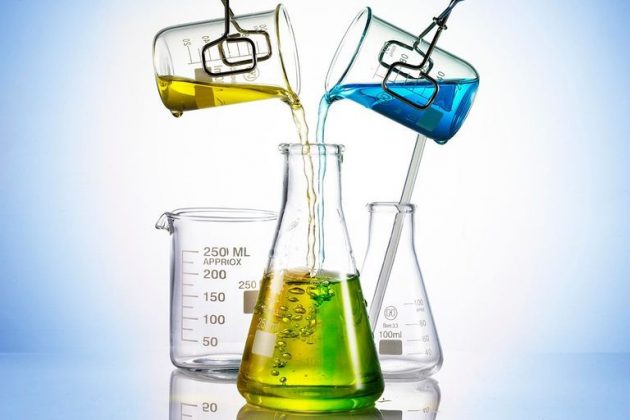The mysterious Coronavirus has created an unprecedented situation in China shutting down businesses and locking up people in their homes. It has disrupted the global supply chain of raw materials and intermediates. Our columnist examines the impact on chemical industry and what it can do protect itself against such Black Swan events in the future.
Don’t put all your eggs in one basket, advised our ancestors. Now that China is sneezing, the rest of the world has caught the cold. The supply chain logistics of many chemical manufacturers across the world lie in shambles in the wake of the Coronavirus outbreak in China. Travel restrictions and the resultant widespread absenteeism coupled with reduced demand as a result of economic slowdown is affecting the productivity and efficiency of the Chinese chemical industry.
China’s Capacity
Over the past several years, China has built up humungous capacities in many chemicals. It accounts for more than half of the global production of many chemicals including methanol, MTBE, PVC and PTA. China’s share of the global production of PTA is a whopping 65%. It produces 58% of the world’s methanol and 52% of the global PVC. Other major commodity chemicals in which China enjoys the lion share of world capacity are MTBE (54%), soda ash (50%), VCM (46%), caustic soda (45%), toluene (42%), MEG (42%), mixed xylenes (40%) and paraxylene (40%). In the basic building blocks too, China has a dominant share: ethylene (18%), propylene (32%) and benzene (32%). It produces 36% of the world’s polypropylene and 18% of polyethylene. China’s share of the world polyester capacity is a monstrous 65%.
Supply Disruptions
With such massive capacities built-up in one corner of the world, the outbreak of Coronavirus has caused unprecedented disruptions in the supply chain. Many downstream industries in China are under forced lockdown to contain the infection. Others are operating at sub-optimal capacities due to staffing shortages. Local demand has taken a serious hit as the economic activity slows down. Some upstream producers did not shut down during the long Lunar new year holidays and inventories had already piled up as a result of reduced offtake during the holidays. With the virus outbreak now delaying resumption of normal production in the downstream sector, major producers are feeling the heat of rising inventories. Exports are also seriously affected as restrictions on travel has impacted stevedoring and customs at ports.
Delayed Restart
Many enterprises who scheduled their annual maintenance to coincide with the New Year holidays are now taking time to resume production. MIBK production has been severely curtailed with some plants extending their holiday-shutdown. 500,000 tonnes/year of epoxy resin capacity is currently unavailable due to delay in restart. Other chemicals affected due to similar delay in resumption include styrene, isopropyl alcohol, and ethylene oxide. Many provincial authorities issued directives asking businesses not to resume normal operations until 10th February. This was later extended to 1st March in some provinces. There is much uncertainty on when normal operations will be restored.
Demand Crunch
Authorities have imposed severe travel restrictions to contain the spread of coronavirus. During the New Year holidays, travel dropped by as much as 80%. Wuhan, the 5th largest city in China and the epicenter of the coronavirus outbreak, was placed under lockdown on 23rd January. This was later extended to other cities covering 60 million people, the largest quarantine in history. People returning home after holidays were asked to go into self-imposed quarantine or risk punishment. Beijing and Shanghai have morphed into ghost cities with near-empty streets. The consequent lower demand for fuels means that refineries are operating at lower loads. State-owned Sinopec has imposed cuts on refinery operations ranging from 10% to 35%. The lower refinery operating loads has resulted in a supply crunch of feedstock for the petrochemical industry, which is already reeling from lower demand from downstream users. It is thus a double whammy for the petrochemical producers.
Supply Chain
Comparisons are being made with the SARS outbreak in 2003. But at that time, China’s economy was only the 6th largest with 4.2% share of the global GDP. Today, China is the 2nd largest economy in the world accounting for 16.3% of the world GDP. China has become a manufacturing behemoth in addition to its massive market size. China is now much more integrated with the global economy, contributing 12.4% to the global trade. The economic and social ramifications of the coronavirus outbreak are thus different from that of the SARS outbreak by at least one order of magnitude. Today’s supply chains are also exceedingly intricate and complex to what they were in 2003. Also the current scenario is unique in that both supply and demand have been affected. Dun and Bradstreet estimates that 22 million businesses, or 90% of all active businesses in China, are located in the regions most impacted by the virus. They further estimate that if the virus is not countered by June, the global GDP would contract by 1%.
Indian Industry
Companies overly dependent on cheap imports from China have been badly hurt. The pharmaceutical industry is the most severely hit as it sources nearly two-third of the APIs from China. Raw material stocks are in grave danger of getting depleted within weeks. Agrochemicals and dyestuff are other sectors that will be significantly affected due to disruption of raw materials and intermediates. However, some companies see this crisis as an opportunity to increase their production and make up for the deficit from China. The loud message for the Indian Chemical industry is to unshackle itself from the overdependence on Chinese imports and look for alternate suppliers.
Lessons
Every crisis offers lessons for the future and coronavirus outbreak is no different. It has already provided an unexpected fillip to the “Work from Home” movement. Technologies and infrastructure for remote working are expected to bloom and mature in the coming days. But the biggest business transformation will be witnessed in the future-proofing of supply chains. The current scramble for locating alternate suppliers will consolidate into building redundancy in sourcing through geographical diversification. Big enterprises will increasingly rely on disruptive technologies like Artificial Intelligence and Blockchain to smartly switch supply chains on demand. Businesses also need to reconsider the prudence of having lean supply chains and reduced inventories. It is time for a profound rethink on supply chain management and rewriting of its rulebooks.
Epilogue
As of writing (20th February), the virus has infected 74,576 people and caused 2,118 fatalities. In the absence of transparent data over the spread of the disease, rumours are rife that the authoritarian regime maybe concealing the real intensity and extent of the crisis. Hubei province, in a fresh directive today (20th February), asked companies not to resume work before 11th March.
Readers’ responses may be sent to:
k.sahasranaman@gmail.com or
chemindigest@gmail.com

































